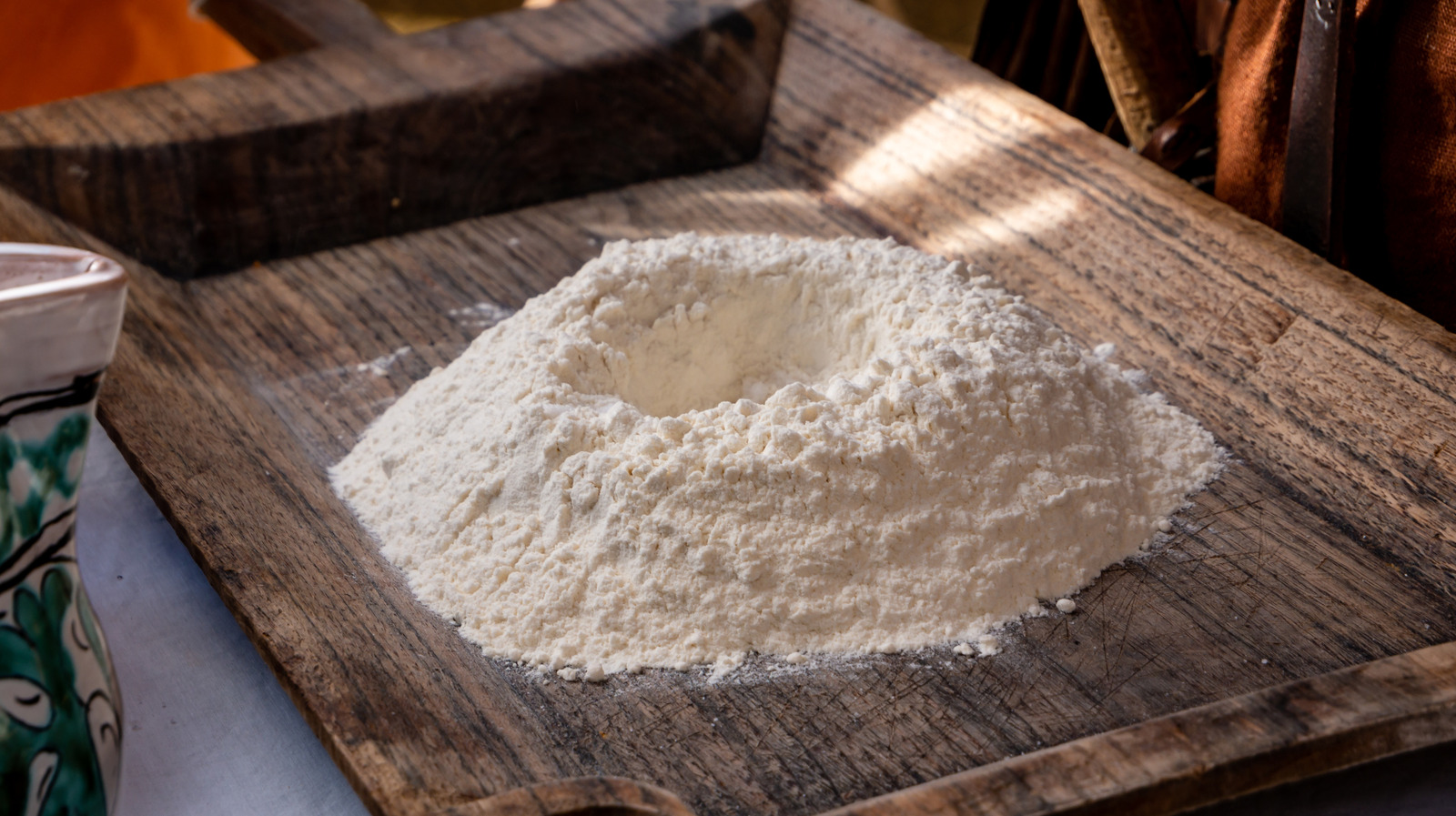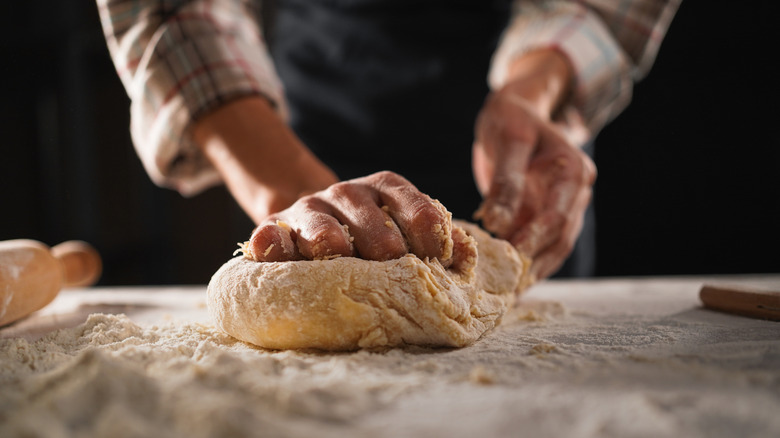When a recipe calls for flour, many home-based chefs reach for the generic all-purpose kind. This makes sense for kitchen efficiency, as it works just fine in many recipes. However, if you happen to be baking, the type of flour you use can make a big difference — especially with breads and pastries that rely heavily on structure and texture. Yes, you can use all-purpose flour in this scenario, but a game-changing alternative is the appropriately named bread flour.
These two pantry-mates work on different levels because they’re designed for different uses. The primary distinction lies in the protein content. At its core, bread flour is milled from hard wheat and boasts a protein level of about 12–14%, while all‑purpose flour sits in the more moderate range of 9–12%, depending on the brand. This plays a crucial role in the development of gluten, which is a type of protein that affects how your dough behaves on its way to becoming bread. It ultimately determines the texture of your baked goods.
For bread, choosing the right flour can be the difference between a dense loaf or the desirable airy, chewy one. The extra protein and gluten in bread flour gives the dough enough stability to rise and hold a proper form for light, crusty breads. It’s also a good choice for bagels and pizza dough. On the other hand, all-purpose flour has just enough protein for a balanced approach that’s ideal for cookies, cakes, muffins, pancakes, and quick breads.
Color, texture, and substitution potential
Apart from proteins and gluten content for structural integrity, there’s a few more notable differences between bread flour vs. all-purpose flour. These mostly concern color and texture of the flour itself, rather than the breads or baked goods produced with them. In a side-by side comparison, you’ll notice that bread flour has an off-white color plus a more coarse texture, which comes from it being made out of high-protein hard wheat. By contrast,its all-purpose counterpart is typically fine and powdery with a brighter white coloration, especially if it’s been bleached, as many flours are.
Though bread flour is the ideal choice for making fresh homemade breads, it’s not necessarily a mainstay item in every home pantry. If you find yourself lacking on bread-making days, rest assured that it’s possible to substitute all-purpose flour for bread flour in recipes. The results will be somewhat different, likely resulting in bread that’s slightly softer and less chewy. But the difference will be subtle.
You’ll generally be making a 1:1 substitution. Likewise, it’s possible to use bread flour in place of all-purpose flour in your cookies, cakes, and other baked goods. Plenty more types of flours populate grocery shelves. So if you want to explore further, you can check out our article on the difference between cake flour and bread flour.






